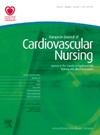不同文化和语言的移民群体寻求急性冠状动脉综合征院前治疗的情况:范围界定综述
IF 3.9
3区 医学
Q2 CARDIAC & CARDIOVASCULAR SYSTEMS
引用次数: 0
摘要
目的 研究报告一致显示,文化和语言多样化(CALD)的急性冠状动脉综合征(ACS)患者的院前延误时间更长。我们进行了一次范围界定综述,以描述用于定义和识别 CALD 群体的术语和方法,并总结涉及 CALD 群体的 ACS 研究中与院前延误相关因素的现有证据。方法和结果 我们在六个电子数据库中检索了已发表的研究,并在谷歌学术中检索了灰色文献,以确定有关经历 ACS 的 CALD 移民院前治疗的研究。我们遵循乔安娜-布里格斯研究所(Joanna Briggs Institute)的方法框架进行了范围界定审查。23 项研究符合我们的资格标准(定量研究 17 项;定性研究 6 项;混合研究 1 项)。种族、移民或外籍人士等术语定义了 CALD 群体。大多数研究使用单一指标(如出生国)来识别 CALD 群体,只有两项研究使用了与寻求治疗延迟相关的理论模型来指导数据收集。影响CALD人群院前延误的大多数因素与普通人群中报告的因素相似。一个独特的发现是描述症状的语言不同,翻译时改变了症状的含义,导致医疗服务提供者的误解(例如,西班牙裔人将asfixiarse[翻译为窒息/窒息]用于呼吸困难/呼吸急促)。结论 用于定义和识别 CALD 群体的术语和方法并不一致。关于影响 CALD ACS 患者院前寻求治疗的因素的研究还很有限。未来的研究应使用与寻求治疗延迟相关的理论模型来全面探讨影响院前延误的因素。此外,研究人员应考虑采用自我报告或多种指标来确定 CALD 状态。本文章由计算机程序翻译,如有差异,请以英文原文为准。
Prehospital treatment-seeking for acute coronary syndrome in culturally and linguistically diverse immigrant populations: a scoping review
Aims Studies consistently report longer prehospital delays in culturally and linguistically diverse (CALD) patients experiencing acute coronary syndrome (ACS). A scoping review was conducted to describe terms and methods used to define and identify CALD populations and summarise available evidence on factors related to prehospital delays in ACS studies involving CALD populations. Methods and results We searched six electronic databases for published studies and Google Scholar for grey literature to identify studies on prehospital treatment-seeking in CALD immigrants experiencing ACS. We followed the Joanna Briggs Institute methodological framework for scoping review. Twenty-three studies met our eligibility criteria (quantitative n=17; qualitative n=6; mixed n=1). Terms like ethnicity, migrant or expatriate defined CALD populations. Most studies used a single indicator (e.g., country of birth) to identify CALD cohorts, and only two studies used a theoretical model related to treatment-seeking delays to guide data collection. Most factors affecting prehospital delays in CALD populations were similar to those reported in general populations. A unique finding was a difference in the language used to describe symptoms, which, when translated, changes their meaning and resulted in misinterpretation by healthcare providers (e.g., asfixiarse [translates as asphyxiate/suffocate] used for dyspnoea/shortness of breath in Hispanics). Conclusions Terms and methods used for defining and identifying CALD populations are inconsistent. Studies on factors affecting prehospital treatment-seeking in CALD ACS patients are limited. Future studies should use theoretical models related to treatment-seeking delays to comprehensively explore factors affecting prehospital delays. Additionally, researchers should consider self-reported or multiple indicators to determine CALD status.
求助全文
通过发布文献求助,成功后即可免费获取论文全文。
去求助
来源期刊

European Journal of Cardiovascular Nursing
CARDIAC & CARDIOVASCULAR SYSTEMS-NURSING
CiteScore
5.10
自引率
10.30%
发文量
247
审稿时长
6-12 weeks
期刊介绍:
The peer-reviewed journal of the European Society of Cardiology’s Council on Cardiovascular Nursing and Allied Professions (CCNAP) covering the broad field of cardiovascular nursing including chronic and acute care, cardiac rehabilitation, primary and secondary prevention, heart failure, acute coronary syndromes, interventional cardiology, cardiac care, and vascular nursing.
 求助内容:
求助内容: 应助结果提醒方式:
应助结果提醒方式:


